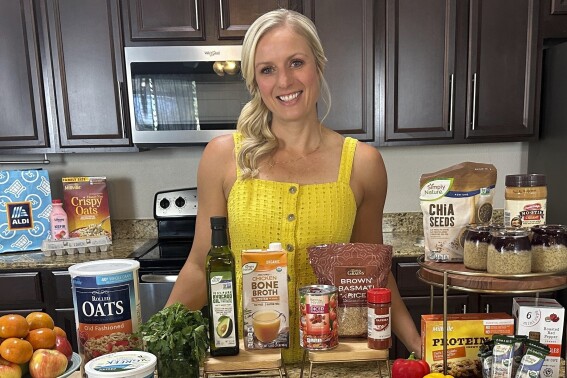
When I recently gave up drinking for a month, while watching TV I found that my right hand kept reaching over to the side-table where the beer should be. The ingrained habit of taking a swig of something cold and hoppy was proving impossible to break. So I let the hand have the beer it wanted – just without the alcohol.
My hand couldn’t tell the difference and, surprisingly, my tastebuds couldn’t either. It turns out that the best alcohol-free beers (the first I tried was Guinness Zero) are now almost indistinguishable from the “real” thing, allowing me to go sober without changing my habits at all.
“The new beers are richer and fuller than they used to be, which reflects the influence of master brewers from Europe entering the market,” says Stuart Elkington, founder of specialist retailer drydrinker.com. “Low-alcohol lager is particularly difficult to do right,” Stuart says. “It used to be quite sweet, but now the profile has definitely changed.”

Independent analysts Statista value the UK market for non-alcoholic beer at roughly £105 million and expect it to grow by 3.4 per cent annually. “It’s been growing consistently for years and I don’t see that changing,” says Elkington, who set Dry Drinker up as a side-hustle in 2017 while working for a brewery. “At the time there was only one famous low-alcohol beer, which was Beck’s Blue, so I went around looking for others. Now I’ve got 125 beers on the site and I could probably have 300, there’s so much choice out there.”
A recent study by the Portman Group found that a quarter of British drinkers are keen to cut back on booze, rising to nearly a third of 18-24 year-olds. The number of people taking part in Sober October grows every year and its never been easier to find non or low alcohol drinks. Non-alcoholic beer is fast overtaking low-alcohol varieties in popularity. The trend is clear. All the more reason to find the best of the current brews.
Which are the best low-alcohol and non-alcoholic beers of 2024? At a glance
- Best overall low-alcohol beer - Erdinger Alkoholfrei
- Best non-alcoholic pale ale - Days Pale Ale
- Best low-alcohol lager - Lucky Saint
- Best zero-alcohol beer - Estrella Galicia
- Best Stout - Nogne Milk Stout
Why you can trust Telegraph Recommended
Our thorough, real-world tests will always help you find the best product at the best price. No manufacturer ever sees copy before publication and we do not accept payment in exchange for favourable reviews. Visit our Who We Are page to learn more.
How I tested the best low-alcohol beers
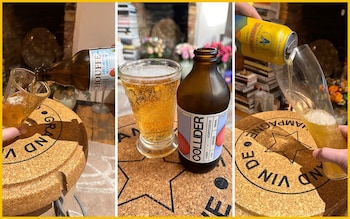
With recommendations from specialists like Elkington, I supped my way through 60 low-alcohol brands. I was looking for an attractive colour, a complex taste and a rich, creamy, frothy head that stays with the beer all the way down the glass. Most importantly, I was looking for the “aaah” moment: the pleasure of opening a cold beer when you get home from work. Only the best low-alcohol beers can pass that test. Here they are.
Best low-alcohol beers
1. Erdinger Alkoholfrei 500ml
£1.75, Waitrose
Best overall, 10/10
We like: it’s isotonic, so it’s practically a health drink
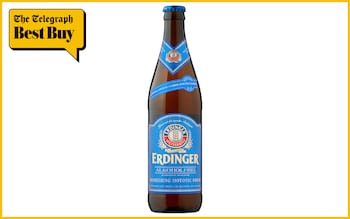
- 0.5 percent ABV
- 25 calories per 100ml
All the beers recommended here are either refreshing, complex, or outstandingly tasty. The Erdinger ticks all those boxes and passes the “aaah” test better than any other.
It’s a weissbier, an increasingly popular beer-type from Bavaria. Containing wheat as well as barley malts and top-fermented using special yeasts, weissbiers have a sour tang and fruity aroma, usually compared to bananas and cloves, that wakes up the taste buds.
Erdinger Alkoholfrei is as good as any of them, despite the lower ABV. It pours with a deep, lacy froth that brings a pleasant sherbet fragrance when you sip. It’s slightly salty on the lips, with a fresh-baked bread taste that goes well with German fare like sausage and mustard but also suits a Greek salad. Impressively, it doesn’t leave the slightly cloying aftertaste that can be the case with full-strength weissbiers.
Erdinger present it as a “refreshing isotonic drink” which I’m not entirely swayed by. Though it has half the calories of fruit juice and does contain vitamins B9 and B12, which play a role in the immune system, I think it might raise some eyebrows if you cracked one open at the gym.
But it definitely works as a reward to yourself on getting home. It’s also one of the most widely available of the beers tested here, found in most big supermarkets. I’d say anyone who hasn’t tried low-alcohol beers should start here.
2. Days Pale Ale 330ml
£1.80, Tesco
Best non-alcoholic pale ale, 9/10
We like: deliciously complex and refreshing
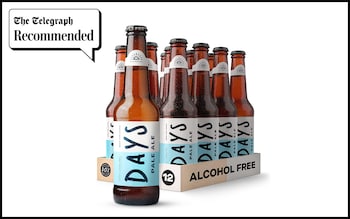
- 0 percent ABV
- 21 calories per 100ml
As a huge pale ale fan I was disappointed by some of the low-alcohol ales I tried and horrified by others, but Edinburgh brewer Days gets everything right. Double-fermented using CTZ, Magnum and Herkules hops, their zero percent pale ale is vibrant and juicy, with hints of mango and plum that make it the perfect thirst-quencher when you get home from work.
As it lingers on the tongue gingerbread, caramel and malted milk depths come through, making it a great accompaniment to barbecues, burgers and – in my expert opinion – Wensleydale cheese. Days Brewing also make an excellent lager, and donate two per cent of sales to progressive mental health charities. Here’s hoping they branch out into other beer types soon.
3. Lucky Saint 330ml
£1.80, Tesco
Best low-alcohol lager, 9/10
We like: the foamy head and lagery tang
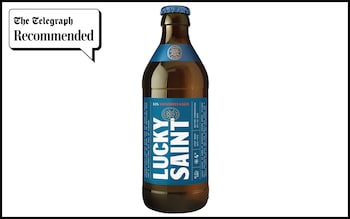
- 0.5 percent ABV
- 16 calories per 100ml
Another slightly cloudy Bavarian beer, this time due to being unfiltered: the ingredients are just water, barley, yeast and hops. It has a golden body, a good foamy head and a slight salty sweetness — a little bit floral, a little bit citrus — that goes well with a crepe suzette, a key lime pie or just simple salty fries. Really good, and widely available. You will probably have seen it on tap in your local pub. Next time, try it.
4. LOAH Lager Lime 300ml
£25 for 12, Loah Beer
Best flavoured beer, 7/10
We like: the thirst-quenching citrus bite

- 0.5 percent ABV
- 13 calories per 100ml
With fewer calories than an apple and an equally refreshing green taste, LOAH’s 0.5% Lager Lime is a great advert for low-alcohol beer as a relatively healthy thirst-quencher. Using citrussy Centennial hops to match the natural lemon and lime flavourings (not actual lime juice, sadly), it’s far nicer than your traditional pub lager-and-lime – although still ever so slightly Sprite-ly. No bad thing on a hot day. The clean, sharp taste goes well with chilli-spiced dishes.
5. Shorebreak 330ml
£3.20, Firebrand Brewing
Best hazy pale ale, 8/10
We like: the juicy sweetness
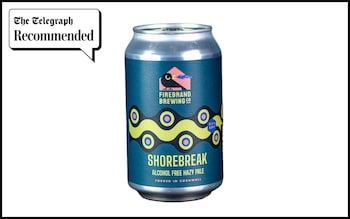
- 0 percent ABV
- 8 calories per 100ml
Cloudy, highly hopped and less bitter, hazy pale ales are one of the most refreshing beer styles and Shorebreak, from Cornwall’s Firebrand brewery, is an excellent example. The American Simcoe, Citra and Cascade hops give it a juicy, mango sweetness that would go equally well with a Thai curry or a fruit sorbet. Low on foamy sparkle, this is almost more of a juice than a beer. It wants to be drunk ice cold, but is all the nicer for it.
6. Upside Dawn
£14.20 for six, Athletic Brewing Co.
Best golden beer, 8/10
We like: the pleasing, summery vibe
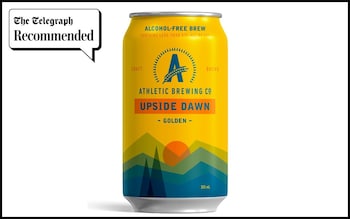
- 0.5 percent ABV
- 13 calories per 100ml
I do love a golden ale: mellower than a lager but less insistently hoppy than an IPA. This multi-award winning golden from Connecticut brewers Athletic is very drinkable, with summer meadow vibes – notes of apple blossom, camomile and corn. It would go very well with a bean chilli or anything sweetly spicy.
Athletic do five other beer types, all decent, and are championed by various American football and soccer stars. Who knew beer and sports went together?
7. Nogne Milk Stout 330ml
£2.69, Wise Bartenders
Best stout, 9/10
We like: the blend of bitter and sweet notes

- 0 percent ABV
- 50 calories per 100ml
Sweetened with lactose, this stout from Norway is as refreshing as a cola if served ice cold, so it definitely passes the ‘aah’ test. It didn’t have the creamy head I was expecting, but its delicious chocolate notes go equally well with sweets like tiramisu and rich savouries like bangers and mash. Stuart Elkington even recommends it with curries: “The dry spice of a curry really works with that bit of sweetness you get with a stout, he says. “The darker the stout, the spicier the curry.”
8. Small beer session pale ale 350ml
£12.95 for six, Waitrose
Best beer under 3% alcohol, 9/10
We like: it’s tailor made for cutting down, not cutting out alcohol
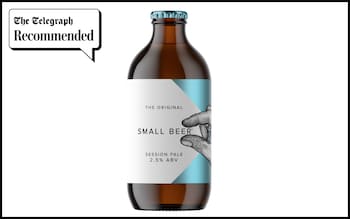
- 2.5 percent ABV
- 29 calories per 100ml
At 2.5 percent this is not strictly a low-alcohol beer but what’s now called ‘low-ABV’ or ‘session ale’ and in the old days was simply called ‘small beer’, hence the name. It’s tart and juicy, with a lovely tingle on the tongue and a pleasantly bitter aftertaste that cuts nicely through a charred steak, a barbecued sausage or chargrilled veg.
It’s obviously still alcoholic — two of these would equal one normal-strength lager — but it’s relatively low in calories and makes a good choice for anyone aiming to cut down, rather than cut out the booze.
The Small Beer Brew Co now make a lager, an IPA and a hazy IPA, all between 2.0 and 2.5 percent ABV. It’s a tasty range, but my favourite remains this session pale for its citrussy tang.
9. Estrella Galicia 330ml
£9 for six, Greene King
Best zero-alcohol beer, 8/10
We like: much better than its big-brand competitors
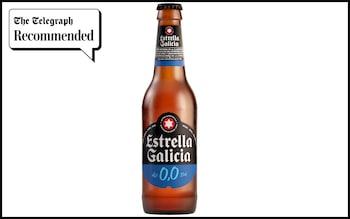
- 0 percent ABV
- 21 calories per 100ml
A lot of the big-name lagers now come in zero alcohol versions. I tried over a dozen and some (usually the most famous) taste truly horrible, as if there’s some kind of chemical additive. Others, by contrast, are lovely. In fact, some taste more refreshing than their full-alcohol brothers.
Estrella Galicia stands out among the good kind. It’s zingy and sparkly on the tongue, slightly salty, slightly sweet from the malt and with a cooling, apple-y freshness that cuts through a chilli or anything spicy and fatty. If you’re looking for a zero-alcohol lager, rather than ploughing through all the big names one by one and being disappointed, I’d start here.
10. üNN India Pale Ale 330ml
£19.41 for six, Dry Drinker
Best low-alcohol IPA, 9/10
We like: the deep, multi-layered flavours
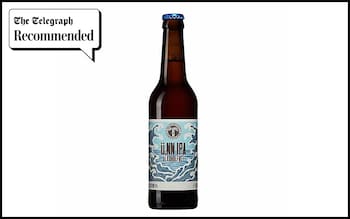
- 0.5 percent ABV
- 32 calories per 100ml
If you’d given me this dark amber unfiltered IPA from Hamburg in a blind test I would swear it was about six percent alcohol. Dry-hopped with Simcoe and Mosaic, the secret ingredient is apparently a rare yeast that only likes certain sugars and runs out of food before it has produced 0.4 percent ABV, but stays alive to deepen the flavour. I tasted sage, thyme, plum and nectarine notes that would go well with a black forest gateau – but I enjoyed it best with a chicken jalfrezi.
11. Beavertown Lazer Crush
£22 for 12 cans, Beavertown
Best non-alcoholic IPA, 8/10
We like: the peachy, iced-tea hints
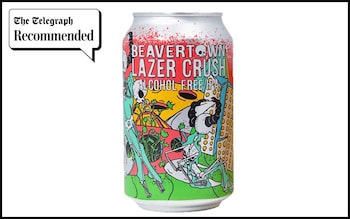
- 0.3 percent ABV
- 27 calories per 100ml
Whereas the üNN above counts as low-alcohol, to be classed as a non-alcoholic pale ale the ABV has to be under 0.5 percent. The best I’ve come across is this one from Beavertown, the breweary founded by the son of Led Zep’s Robert Plant but since swallowed up by Heineken.
It’s made with a special kind of yeast that ferments the malt without producing alcohol. As a side-effect there’s no foamy head, but you’ll forgive that of a beautifully sweet and juicy pale ale – it’s very pale indeed – with apple and caramel notes and a light, peachy aftertaste that’s reminiscent of iced tea. A great, guilt-free lunchtime beer that goes well with buttery seafood like lobster or shrimp.
Beavertown make an even tastier session IPA called Satellite, although at 2.8 percent ABV it’s a bit too strong to recommend to non-drinkers.
12. Collider 330ml
£29 for a case of 12, Collider
Best mood-boosting beer, 8/10
We like: the fresh, vegetal taste of the added adaptogens
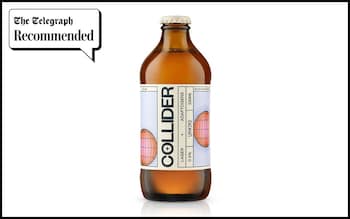
- 0.5 percent ABV
- 15 calories per 100ml
Here’s something different: a low-alcohol beer containing plant extracts which reduce stress and anxiety. L-theanine, found in tea, promotes serotonin production, the indian root ashwaganda reduces the stress hormone cortisol and lion’s mane mushroom increases nerve growth factor. I’m always skeptical of this kind of thing, but the website does cite multiple, peer-reviewed studies.
They make a session pale ale, but I tried the lager, which was very refreshing if not very hoppy. Instead there’s a slightly citrusy, nicely astringent flavour reminiscent of Early Grey tea or CBD-infused drinks. It’s almost closer to a very light cider than a beer and would go well with pulled pork or sweet-and-sour chicken.
I couldn’t swear that I felt notably relaxed after one beer, but after four I did seem to be fairly anxiety-free. It’s very hard to know what’s placebo effect and what’s real, of course, but the leafy taste is nicely different and it’s nice to drink a beer with a theory behind it. If they don’t open a stall at Glastonbury this year, they’ll be missing a trick.
13. Sussex Best Low Alcohol 275ml
£33.20 case of 12, Harvey’s Brewery
Best low-alcohol bitter, 7/10
We like: fresh and light without losing its hoppy signature
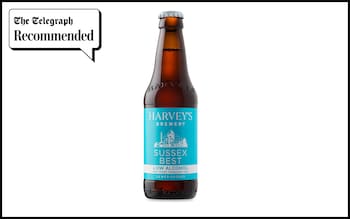
- 0.4 percent ABV
- 18 calories per 100ml
The Sussex Best Bitter, made with Maris Otter and Crystal malts and four different local hops, is this Lewes brewery’s flagship beer and has won multiple awards. Filtered to reduce the ABV from 4 percent to 0.5 percent, it retains the light caramel colour and biscuity bitterness, but tastes fresher and lighter. It goes well with chicken or white fish fried in butter.
14. Chouffe Alcohol Free 330ml
£1.25, ASDA
Best non-alcoholic Belgian beer
We like: the continental sophistication
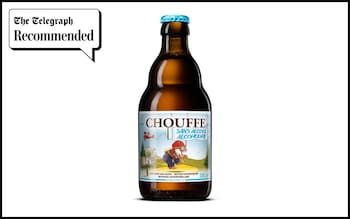
- 0.4 percent ABV
- 27 calories per 100ml
You always feel like a connoisseur drinking a Belgian beer, but they’re usually very strong. The regular La Chouffe Blonde – once a rare find but now available in supermarkets – is a punchy 8 percent ABV. I tried one of those before tasting this zero-alcohol version and the difference is stark.
Whereas the standard Chouffe is intensely sweet and malty, the non-alcoholic one is lighter and more savoury. There’s little foam, but it does leave a tingle on the tongue. You’ll find vegetal top-notes reminiscent of artichoke hearts, but the main flavour is deeply bready, something like bagel or pretzel, making it the perfect accompaniment to north-European, sausagey dishes.
I far prefer it to the 8 percent version – and when you’re drinking something with a gnome on the front, you look like an expert.
Also recommended
The following beers also impressed, if not quite as much as our top 13
Free Damm 330ml
£4 pack of four, Tesco
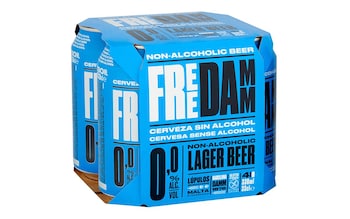
Juicy, sweet-and-sour dark amber lager: 0% ABV, 20 cals per 100ml
Brooklyn Special Effects lager 330ml
£4.50 pack of four, Tesco
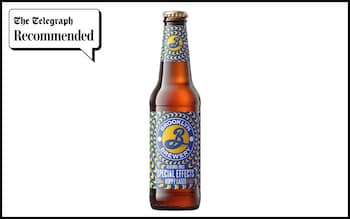
Rich, malty, amber-style lager, tastes like a bitter: 0.4 % ABV, 29 cals per 100ml
M&S Low-Alcohol Czech Lager 500ml
£1.80, Ocado
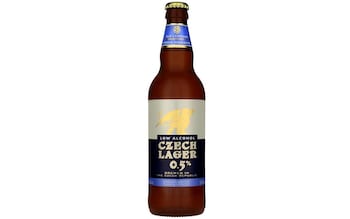
Honeyed, sharp, refreshing, great with katsu curry: 0.5% ABV, 19 cals per 100ml
Big Drop Paradiso Citra IPA Alcohol Free 330ml
£1.80, Waitrose
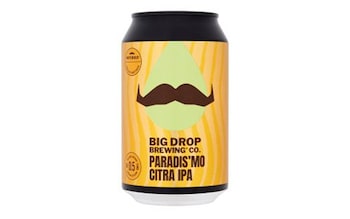
Light, golden, lemony IPA that has won awards: 0.5% ABV, 18 cals per 100ml
Corona Cero 330ml
£4.50 pack of four, Tesco

Refreshing, light, zingy, exactly like Corona, 0% ABV, 17 cals per 100ml
San Miguel 0.0 330ml
£4.25 pack of four, Tesco
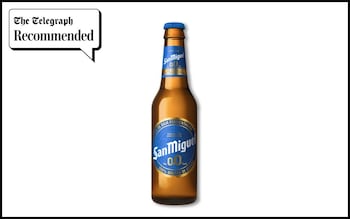
Tastes like the real thing, goes well with salty food, 0% ABV, 24 cals per 100ml
FAQs
How is low alcohol beer made?
There are two ways. One is to remove alcohol from an existing beer by vapourising or filtering it. The other is to brew as normal, but prevent the alcohol content exceeding a certain limit.
“It’s called gravity brewing: you brew up to a certain ABV, which obviously keeps the flavour of that particular beer,” says Stuart Elkington of The Dry Drinker. “The majority of the brewers in the UK use that formula.”
Is low-alcohol beer better for you?
Yes, if it helps you to stay within the UK chief medical officer’s low-risk limit of 14 units per week. Beer sold as low-alcohol must have less than 1.2 percent ABV. To be sold as alcohol-free it must have less than 0.05 percent ABV. This compares to around five per cent ABV in the average lager.
Low-alcohol beer has fewer calories, too. “The average calories in an alcohol-free beer is 80 or 90 compared to 200 or 300 in a standard beer,” Elkington says. “That’s because most are lower in sugar. There are even sugar-free beers, like Moritz. There are specialists in that market now.”
Low-alcohol beer will also contain the B-vitamins, flavonoids, polyphenols and minerals like potassium and selenium that are naturally present in beer and may have healthful effects.
View the latest Waitrose & Partners and Tesco deals
Disclaimer: The copyright of this article belongs to the original author. Reposting this article is solely for the purpose of information dissemination and does not constitute any investment advice. If there is any infringement, please contact us immediately. We will make corrections or deletions as necessary. Thank you.

